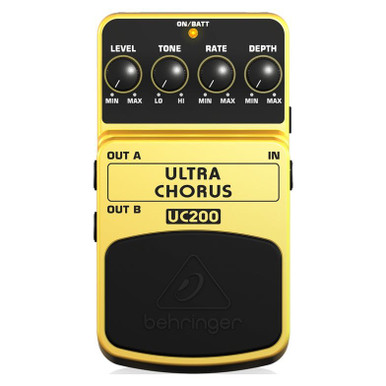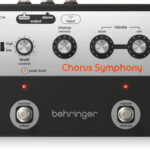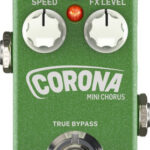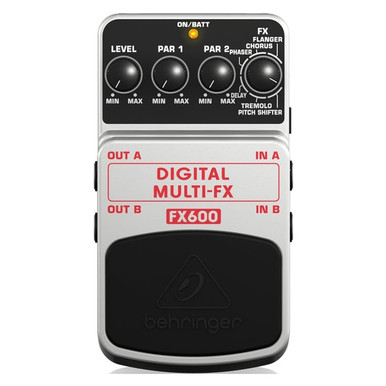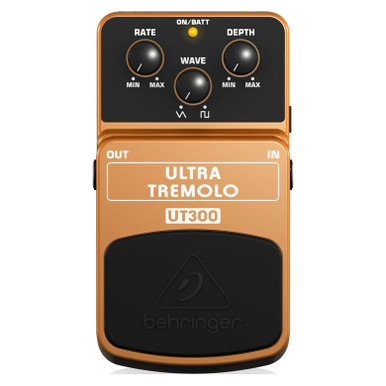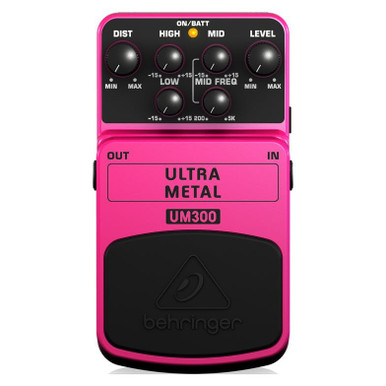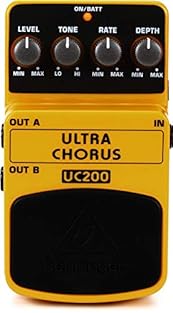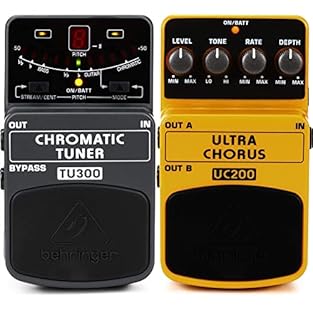Tasty Pedals made by Behringer
Behringer is a prominent manufacturer of audio equipment, including mixers, amplifiers, signal processors, synthesizers, and digital effects units, known for their affordability and wide range of products. Founded in 1989 by Uli Behringer, the company has grown rapidly to become one of the largest manufacturers of audio equipment in the world.
Behringer’s product lineup covers a broad spectrum of audio equipment, catering to musicians, audio engineers, DJs, and live sound professionals. The company offers a variety of mixers, ranging from compact analog mixers for home studios to digital mixers with advanced features for live sound and recording applications.
In addition to mixers, Behringer produces a wide range of amplifiers, including guitar amps, bass amps, and powered PA speakers, as well as signal processors such as equalizers, compressors, and effects units. Behringer synthesizers, like the DeepMind series, have also gained popularity for their affordability and impressive sound quality.
Behringer is known for its commitment to providing high-quality audio equipment at affordable prices, making professional-grade gear accessible to a wide range of musicians and audio enthusiasts. However, the brand has also faced criticism and controversy over issues related to intellectual property rights and product cloning. Despite this, Behringer’s extensive product lineup continues to be popular among musicians and audio professionals seeking reliable and affordable audio solutions.
Just Pedal Ingredients.
Chorus — A chorus pedal works by splitting your signal, slightly delaying one part and modulating its pitch before blending it back with the original. The result is a rich, shimmering tone that feels wide and fluid, almost as if several guitars are playing together in unison. It’s an effect that can add life and movement to your playing, making clean tones sound lush and dreamy or adding a subtle shimmer to warm overdrive.
From the classic 80s shimmer heard on countless records to modern ambient textures, the chorus effect remains timeless. Whether you want a gentle swirl for rhythm parts or a deep, detuned wash for atmospheric soundscapes, a good chorus pedal brings space and dimension to your tone. It’s a staple on many pedalboards for its ability to transform even the simplest chords into something spacious and expressive.
. Guitar Pedals — Your pedal is like a signature dish for your sound — a flavour-packed creation that transforms the bland ingredients of your guitar into something unforgettable. Each one adds its own seasoning, texture, and heat, turning a simple meal into a feast of tone.
These tasty little boxes sit in a row, like plates on a buffet, letting you mix and match flavours as you play. With one tap of your foot, you can swap sweet for spicy, subtle for smoky, and serve up something completely new. From the comfort food of warm overdrive to the fiery kick of fuzz, from smooth jazz sauce to heavy-metal spice, pedals give players a full menu of options to express their taste. And just like with food, once you’ve tried one dish, you’ll want to sample them all.
Collecting, trading, and discovering new flavours soon becomes part of the joy of being a tone-loving gourmet geek with a guitar.. New — This is brand new, fresh in, and a UK warranty is included. Very Popular!. Pedal — Your pedal is like a signature dish for your sound — a flavour-packed creation that transforms the bland ingredients of your guitar into something unforgettable. Each one adds its own seasoning, texture, and heat, turning a simple meal into a feast of tone.
These tasty little boxes sit in a row, like plates on a buffet, letting you mix and match flavours as you play. With one tap of your foot, you can swap sweet for spicy, subtle for smoky, and serve up something completely new. From the comfort food of warm overdrive to the fiery kick of fuzz, from smooth jazz sauce to heavy-metal spice, pedals give players a full menu of options to express their taste. And just like with food — once you’ve tried one dish, you’ll want to sample them all.
Collecting, trading, and discovering new flavours soon becomes part of the joy of being a tone-loving gourmet geek with a guitar.. Stereo — A stereo pedal or setup splits your guitar signal into two separate outputs, allowing you to create a wide, spacious sound when run into two amps or channels. Effects like chorus, delay, and reverb sound especially lush in stereo, as the modulation or repeats can bounce between left and right channels for a three-dimensional feel. It’s a popular choice for players who want to fill a room or studio mix with depth and movement that a single amp simply can’t produce.
Using stereo pedals opens up creative options for layering tones and building immersive soundscapes. You can pan effects across the stereo field, send clean and effected signals to different amps, or combine analogue and digital textures for a rich, dynamic sound. Whether you’re crafting ambient washes or creating a massive live presence, a stereo setup delivers clarity, separation, and a sense of space that transforms your overall tone.. Ultra.
